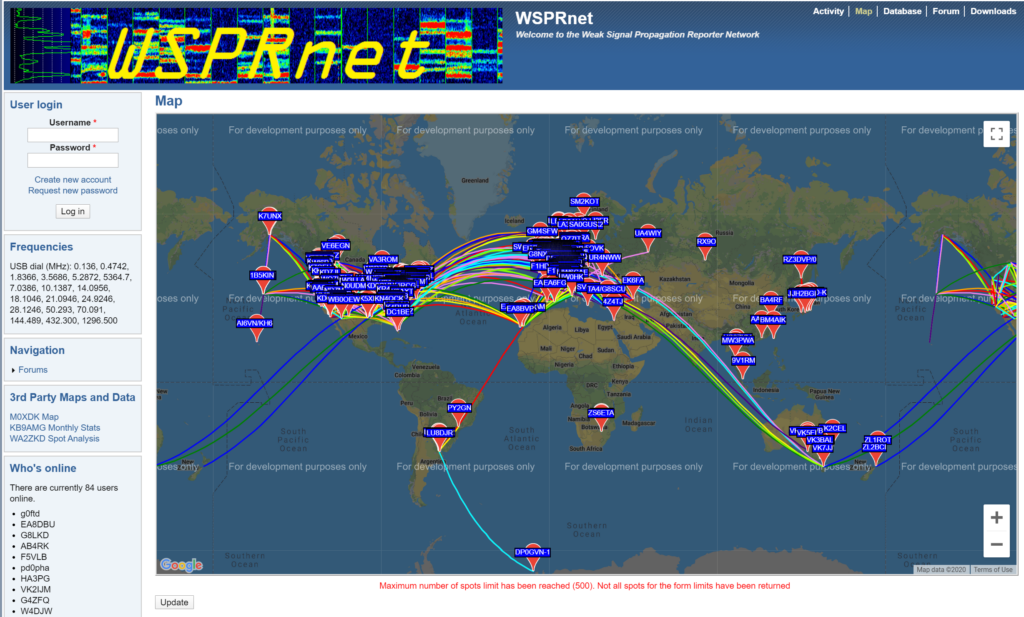WSPR = (pronounced “whisper”) stands for “Weak Signal Propagation Reporter.”
What is it?
A computer generated low power Interactive Beacon mode which is surprisingly easy to set up and extremely addictive!
WSPR Sends and receives low-power data transmissions consisting of Callsign + 4 digit locator + dBm transmit power, a total of 50 Bits.
The program can decode signals with S/N as low as −34 dB in a 2500 Hz bandwidth.
Frequencies used are from LF, MF, HF, VHF, UHF.
The software can provide data to a website where your results and the results of others are displayed in real time and over time .

What can I do with it?
- Live propagation data between you and other WSPR stations
- Watch the behaviour of prorogation over time, the seasons and the sunspot cycle.
- See the bands open!
- Check out the practical performance of your antennas.
- Have fun seeing what countries and prefixes WSPR can work on low power.
- Can participate as a “receive only” station.
What do I need?
- SSB receiver or transceiver and antenna
- Computer running the Windows, Linux, FreeBSD, or OS X operating system.
- 1.5 GHz or faster CPU and at least 100 MB of available RAM
- Monitor with at least 800 x 600 resolution
- Sound card supported by your operating system and capable of 48 kHz sample rate.
- WSPR software
- If you will transmit as well as receive, an interface using a serial port to key your PTT line or a serial cable for CAT control. Alternatively, you can use VOX control.
- Audio connection(s) between receiver/transceiver and sound card
- A means for synchronizing your computer clock to UTC (e.g. Dimension 4)
- WSPR Software
Where do I find more information?
https://wsprnet.org/ WSPR Net – lots of info along with interactive maps and charts
wspr.vk7jj.com Alternative WSPR interactive maps and charts only
https://www.physics.princeton.edu/pulsar/K1JT/wspr.html Joe Taylor K1JT and software link.